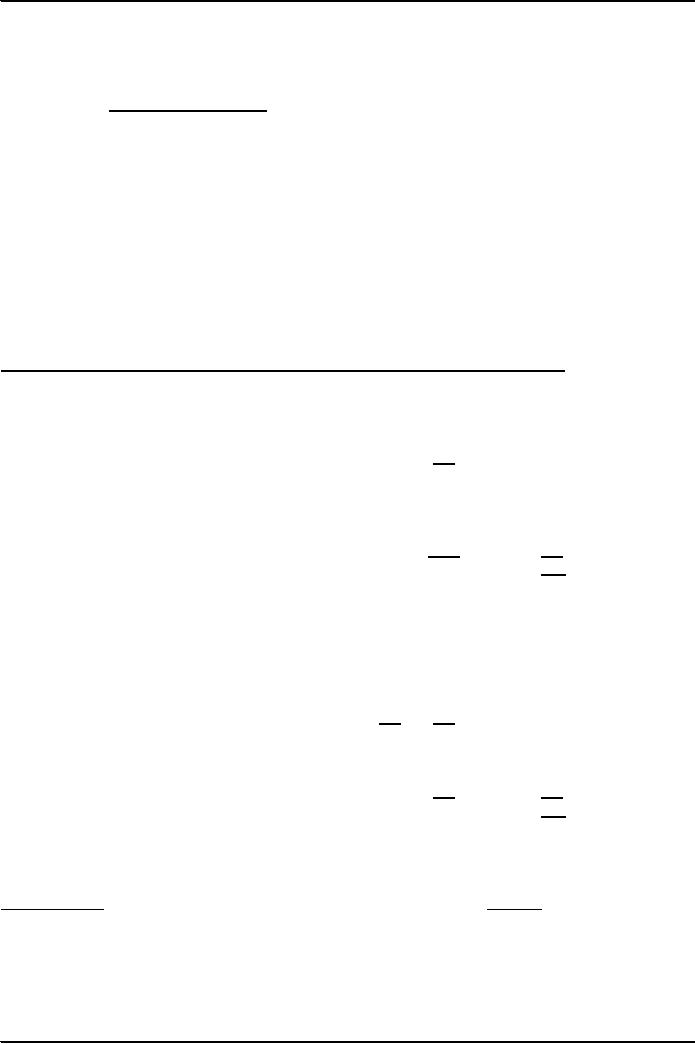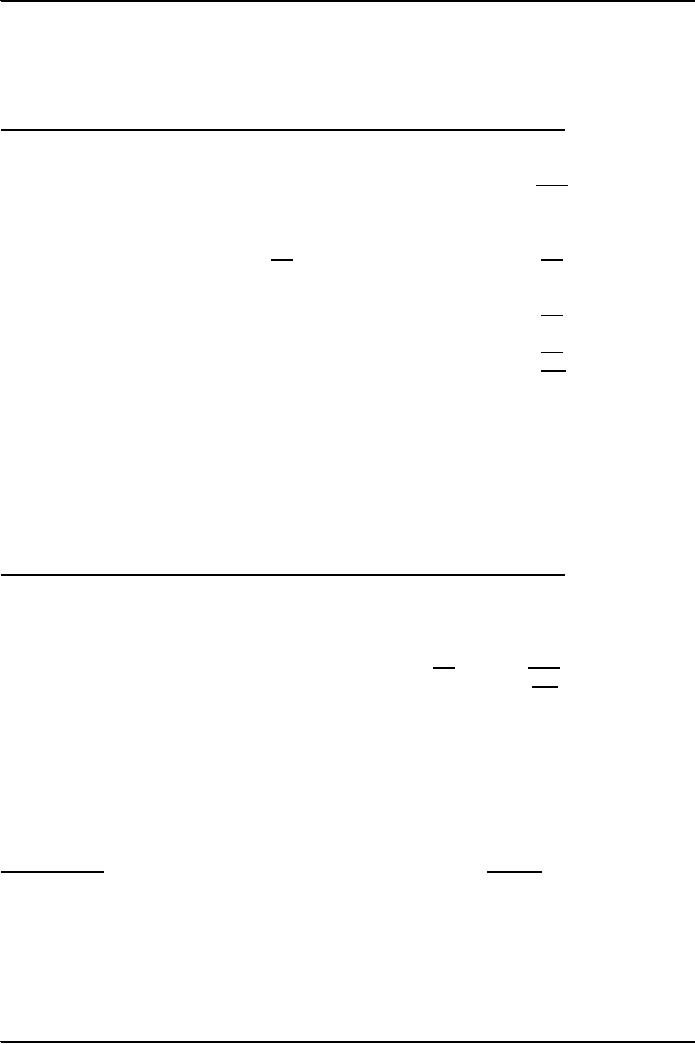 |
Contents of Balance Sheet |
| << BOOKS OF ACCOUNT & FINANCIAL STATEMENTS |
| ENTITY AND ITS ENVIRONMENT AND ASSESSING THE RISKS OF MATERIAL MISSTATEMENT >> |

Fundamentals
of Auditing ACC 311
VU
Lesson
10
BOOKS
OF ACCOUNT & FINANCIAL
STATEMENTS
1.
Books
of Account to be kept by Company
[Section-230]
1.1
A
company should keep proper books of
account in respect
of:
e)
Cash received and expended
by the company;
f)
Sales and purchases of
goods by the company;
g) All
Assets and liabilities of the
company; and
h) In
case of a company engaged in
production, processing, manufacturing, or
mining activities, a
production
record as may be required by the
Commission through a general or
special order;
1.2
Books of
account should be preserved for ten
years;
1.3
Books of
account are to be kept at the
registered office of the company. If
kept at any other
place,
the
registrar should be informed;
1.4
Books of
account should give a true and fair
view of the state of affairs of the
company and should
contain explanation
of transactions.
1.5
Directors
can inspect the books of account
during the business
hours.
1.6
If
company fails to comply with the
above provisions a director, including chief
executive and chief
accountant:
(a) of
listed company is liable to imprisonment for
one year and a fine of
not less than Rs.
20,000
not
more than Rs. 50,000,
and a further fine of Rs.
5000 per day during
which the default
continues;
or
(b) of
other companies is liable to imprisonment
for six months and with a
fine, which may
extend
to Rs.
10,000
2.
Annual
Accounts and Balance Sheet [Section
233]
2.1
First
annual accounts of a company
must be presented before the AGM within
eighteen months
from
the date of incorporation.
2.2
A
subsequent annual accounts should be
presented once at least in
every calendar year before
an
AGM.
In other words, the accounts should be
presented in the AGM within three months
of the
date
of balance sheet. However, in the
case of a listed company the
Commission and in other
cases
the
registrar can extend this period
for a term not exceeding two
months.
2.3
The
accounts should be made up, in the case
of first accounts, from the
date of incorporation,
and
in the
case of subsequent accounts,
from the date of the preceding
accounts to a date not
earlier
than the
date of the meeting by more
than four months.
2.4
The
accounts shall be prepared
for a period not exceeding
12 months, except in case
where
permission
is granted by the registrar for
preparation of accounts for a longer
period.
2.5
Profit
and Loss account and
Balance Sheet shall be audited by the
auditor and auditor's
report
should be
attached thereto.
2.6
Copy of
accounts, auditor's report and directors'
report should be sent to every
member at least
twenty-one
days before the Annual General Meeting
(AGM).
2.7
Listed
companies are required to send
five copies of their audited
accounts to the registrar, the
Commission
and the stock exchange
within 30 days.
3.
Contents
of Balance Sheet [Section
234]
General:
3.1
a)
Balance Sheet and Profit
& Loss Account should give a true and
fair view of the state of
the
company's
affairs and of the profit or
loss of the company.
b) An item of
expenditure fairly chargeable to income
shall be brought into
account.
c) Any
expenditure which in fairness can be
distributed over several
years but is incurred in
one
year
should be so distributed and reasons
for doing so should be given.
3.2
For
Listed Companies and Private or Non Listed
Public Companies Which is a
Subsidiary
of a Listed
Company:
a)
Balance
Sheet and profit and
loss account should be prepared in
accordance with
Fourth
Schedule;
36

Fundamentals
of Auditing ACC 311
VU
b)
A
statement of changes in equity and
cash flow statement.
c)
Accounting
policies should be stated and,
where there is any change in
accounting polices
the
auditor shall report whether he
agrees with the
change.
d)
International
Financial Reporting Standards as adopted by
SECP should be followed in
preparation of
accounts.
For
Other Companies:
3.3
a)
Balance
Sheet and profit and
loss account shall be
prepared in accordance with
the
Fifth
Schedule;
b)
A
statement of changes in equity and
cash flow statement.
c)
Accounting
policies should be stated and,
where there is any change in
accounting
polices
the auditor shall report whether he
agrees with the
change.
d)
International
Financial Reporting Standards as adopted by
SECP should be
followed
in preparation of accounts.
Limited
Liability Company
Balance
Sheet
As on December
31, 2006
Rs.
Rs.
Assets
Non
Current Assets
Fixed
Assets
Tangible
Assets
***
***
Intangible
Assets
***
Long
Term Investments
***
Long
Term Advances, Deposits &
Prepayments
***
Deferred
Cost
***
Current
Assets
***
***
Current
Liabilities
(***)
Capital
Employed
***
Financed
By
Owners'
Equity
Ordinary
Share Capital
***
Reserves
Capital
Reserves
***
***
***
Revenue
Reserves
***
Non
Current Liabilities
Loan
Stocks/Term Finance
Certificates
***
Loan
from financial institutions
***
***
Finance
lease liability
***
***
Director
Chief
Executive
37

Fundamentals
of Auditing ACC 311
VU
Limited
Liability Company
Income
Statement
For
the Year ended December 31,
2006
Rs.
Rs.
Sales
***
Cost
of goods sold
(***)
Gross
profit
***
Operating
expenses
Administrative
expense
***
***
Selling
& Marketing expenses
***
Profit
from operations
***
Other
income
***
Financial
expenses
***
Profit
before tax
***
Income
tax expense
***
Profit
after tax
***
Limited
Liability Company
Statement
of changes in equity
For
the year ended December 31,
2006
Rs.
Rs.
Retained
profits b/f
***
Profit
after tax
***
Dividend
paid
***
(***)
Transfer to
reserves
***
Retained
profits c/f
***
Director
Chief
Executive
38

Fundamentals
of Auditing ACC 311
VU
4. Treatment
of Surplus Arising on Revaluation of
Fixed Assets [Section
235]
4.1
Any
surplus on revaluation of fixed assets
should be transferred to an account named
"Surplus on
revaluation of
fixed assets account".
4.2
This
account should be shown in the balance
sheet after capital and
reserves;
4.3
Surplus
on revaluation shall not be set
off or reduced
except:
a)
For
setting of any decrease in revaluation of
asset; or
b)
When
revalued asset is disposed
of, surplus relating to it can be
adjusted or set off.
4.4
Depreciation
on assets which are revalued
shall be determined with reference to the
value assigned
to
such assets on revaluation and
depreciation charge for the period
shall be taken to the Profit
and
Loss
Account;
4.5
An amount
equal to incremental depreciation for the
period shall be transferred
from "Surplus on
Revaluation of
Fixed Assets Account" to
un-appropriated profit / accumulated
loss through
Statement
of Changes in Equity to record
realization of surplus to the extent of the
incremental
depreciation
charge for the
period;
4.6
An amount
equal to incremental depreciation charged
in previous years may be transferred
from
"Surplus on
Revaluation of Fixed Assets Account" to
un-appropriated profit / accumulated
loss
through
Statement of Changes
Equity.
5.
Director's
Report [Section 236]
5.1
Director's
report shall be attached to the
Balance Sheet.
5.2
It
shall state business
affairs, proposed dividend, if
any, amounts set aside to
reserve, if any.
5.3
In the
case of a public company or a
private company which is a
subsidiary of a public
company
director's
report shall also
include:-
a)
Disclosure
of any material changes and
commitments affecting the financial
position which
have
occurred between the year
end and the date of
report;
b)
Disclosure
of any material changes in the
nature of business etc., which
have occurred
during
the year, if the disclosure is necessary
for understanding the state of the
company's
affairs.
c)
Explanation
to any qualification in auditor's
report.
d)
Pattern of
holding of shares (percentage of
shares held by the parties).
e)
Name
and country of incorporation of
holding company if any,
where such holding
company
is established outside
Pakistan.
f)
The
earning per share.
g)
Reasons
for incurring loss and
reasonable indication of future
prospects of profit, if
any.
h)
Information
about defaults in payment of
debts, if any, and reasons
thereof.
5.4
The
directors of a holding company required
to prepare consolidated financial
statements under
section
237 shall make out
and attach to consolidated financial
statements, a report with
respect to
the
state of group's affairs and
all provisions of subsection (2),
(3) and (4) shall apply to
such
report.
5.5
Director's
Report shall be signed by the chairman or
the chief executive, if so authorized by the
directors;
otherwise by the chief executive and a
director.
6.
Balance
Sheet of Holding Companies [Section
237]
6.1
Consolidated
Financial Statements
(1)
There
shall be attached to the financial
statements of a holding company having
a
subsidiary
or subsidiaries, at the end of the financial
year at which the holding
company's
financial
statements are made out,
consolidated financial statements of the
group presented
as
those of a single enterprise
and such consolidated financial
statements shall comply
with
the
disclosure requirement of the Fourth
Schedule and International
Accounting Standards
notified
under sub-section (3) of section
234.
(2)
Where
the financial year of a subsidiary
precedes the day on which the
holding company's
financial
year ends by more than
three months, such subsidiary
shall make an interim
closing
on the day on which the holding
company's financial year ends,
and prepare
financial
statements for consolidation
purposes.
39

Fundamentals
of Auditing ACC 311
VU
(3)
Every
auditor of a holding company
appointed under section 252
shall also report on
consolidated
financial statements and exercise
all such powers and
duties as are vested
in
him
under section 255.
(4)
All
interim financial statements of a
subsidiary as required under sub-section
(3) shall be
reviewed
by the auditors of that subsidiary
appointed under section 252
who shall report
on
such financial statements in the
prescribed form.
(5)
There
shall be disclosed in the consolidated
financial statements,-
(a)
any qualifications contained in the auditors' reports on the
accounts of subsidiary or
subsidiaries
for the financial year ending with or
during the financial year of the
holding
company; and
(b)
any material note or explanation on a
qualification, regarding to but
not covered in the
financials
statements of a parent company.
(6)
Every
consolidated financial statement
shall be signed by the same
persons by whom the
individual
balance sheet and the profit
and loss account or income
and expenditure
account
of the holding company are required to be
signed under section
241.
(7)
All
provisions of sections 233, 242,
243, 244 and 245
shall apply to a holding
company
required to
prepare consolidated financial statements
under this section as if for the
word
"company"
appearing in these section, the
words "holding company" were
substituted.
(8)
The
Commission may, on an application or
with the consent of the directors of a
holding
company,
direct that in relation to any
subsidiary, the provisions of this section
shall not
apply to
such extent only as may be
specified in the direction.
(9)
If a
holding company fails to comply
with any requirement of this section,
every officer of
the
holding company shall be
punishable with fine which
may extend to fifty
thousand
rupees
in respect of each offense
unless he shows that he took
all reasonable steps
for
securing
compliance by the holding company of
such requirements and that
the non-
compliance
or default on his part was
not willful and
intentional".
6.2
The
directors shall ensure that
year-end of the holding and
its subsidiary companies
shall coincide
except
where there are good
reasons against it. The
SECP shall facilitate the companies in
this
regard
by allowing them to prepare accounts of
extended period, hold AGM
accordingly and file
annual
return after the holding of extended
AGM. [Section 238]
7.
Balance
Sheet of Modaraba Company
[Section 240]
Modaraba
companies are required to attach
financial statements and other reports
circulated to
Modaraba
certificate holders with their financial
statements.
8.
Authentication
of Balance Sheet [Section-
241]
8.1
Accounts should be
approved by the Board of Directors.
8.2
Balance
Sheet shall be signed by the chief
executive and one director. If chief
executive is out of
Pakistan
for the time being then it shall be
signed by two directors and
a statement shall be given by
the
directors explaining reasons
thereof.
9.
Copy
of Balance Sheet to be forwarded to
the Registrar (Section
242)
9.1
Three
copies of listed company's audited
accounts and the auditor's report
duly signed by the
management
and auditors should be filed with the
registrar within thirty days
from the AGM.
9.2
In
other cases two copies
are required.
9.3
Private
Companies are not required to
file their accounts with the
registrar.
10.
Right
of Members/Debenture-Holders of Company to
Copy of the Accounts and
the
Auditor's
Report [Section-243 & 247]
Members
have the right to get copy
of annual accounts etc. of
company on payment. The
same
rights
are available to debenture-holders or
trustees for
debenture-holders.
11.
Quarterly
Accounts of Listed Companies [Section
(245)]
All
listed companies shall
within one month of the
close of every quarter of their
year of account,
prepare
and transmit to the members and the
stock exchange(s) on which
their shares are listed,
a
40

Fundamentals
of Auditing ACC 311
VU
profit
and loss account for,
and balance sheet as at the
end of that quarter, whether audited
or
otherwise.
They shall file with the
registrar and the Commission
three copies thereof.
Quarterly
accounts shall be circulated
for the 1st, 2nd and 3rd
quarter within
one month of the
close
of
that quarter.
Approval
of the board of directors will be mandatory
for circulation of the quarterly
accounts.
If a
company fails to comply with any of the
requirements of this section, every
director including
chief
executive and chief accountant of the
company who has knowingly by
his act or omission
been
the cause of such default
shall be liable to a fine of not
exceeding one hundred
thousand
rupees
and to a further fine of not
exceeding one thousand
rupees per day during
which default
continues.
12.
Additional
Statement of Accounts and Reports
[Section 246]
12.1
The
SECP may by general or
special order, require companies, or a
class of companies or
any
particular
company, to prepare and send
to the members, the registrar, the SECP,
a stock exchange
and
any other person such
periodical statements of accounts,
information or other reports in
such
form
and manner and within
such time, as may be specified in the
order.
12.2
The
Securities and Exchange
Commission of Pakistan vide
circular No. 23/2005, has
directed to all
listed
companies and their
subsidiaries to provide: -
a)
Other Information contained in their
annual report, as such term is
defined in International
Standard
on Auditing 720 (Other
Information in the Documents Containing
Audited Financial
Statements),
to their external auditor (s);
and
b)
Sufficient time to their external auditor
(s) to review and comment
upon any "material
inconsistencies"
found in such Other
Information where the other
information may contradict the
information
contained in the audited financial statements. Listed
companies and their
subsidiaries
are
required to comply with this directive from the
period commencing 1st January 2006.
Auditor's
interest in the statutory
books
The
auditor is interested in the statutory books
because:
They
are directly concerned with the
Accounts
They
are audit evidence to be
used in verifying detailed items in the
accounts; for example
the
total
share capital shown by the
sum of the individual share holdings in
the register of members
must
agree with the share capital
recorded in the books of accounts
Failure to
maintain proper records of any
sort casts doubt upon the
accuracy and reliability
of
the
records generally.
41
Table of Contents:
- AN INTRODUCTION
- AUDITORS’ REPORT
- Advantages and Disadvantages of Auditing
- OBJECTIVE AND GENERAL PRINCIPLES GOVERNING AN AUDIT OF FINANCIAL STATEMENTS
- What is Reasonable Assurance
- LEGAL CONSIDERATION REGARDING AUDITING
- Appointment, Duties, Rights and Liabilities of Auditor
- LIABILITIES OF AN AUDITOR
- BOOKS OF ACCOUNT & FINANCIAL STATEMENTS
- Contents of Balance Sheet
- ENTITY AND ITS ENVIRONMENT AND ASSESSING THE RISKS OF MATERIAL MISSTATEMENT
- Business Operations
- Risk Assessment Procedures & Sources of Information
- Measurement and Review of the Entity’s Financial Performance
- Definition & Components of Internal Control
- Auditing ASSIGNMENT
- Benefits of Internal Control to the entity
- Flow Charts and Internal Control Questionnaires
- Construction of an ICQ
- Audit evidence through Audit Procedures
- SUBSTANTIVE PROCEDURES
- Concept of Audit Evidence
- SUFFICIENT APPROPRIATE AUDIT EVIDENCE AND TESTING THE SALES SYSTEM
- Control Procedures over Sales and Debtors
- Control Procedures over Purchases and Payables
- TESTING THE PURCHASES SYSTEM
- TESTING THE PAYROLL SYSTEM
- TESTING THE CASH SYSTEM
- Controls over Banking of Receipts
- Control Procedures over Inventory
- TESTING THE NON-CURRENT ASSETS
- VERIFICATION APPROACH OF AUDIT
- VERIFICATION OF ASSETS
- LETTER OF REPRESENTATION VERIFICATION OF LIABILITIES
- VERIFICATION OF EQUITY
- VERIFICATION OF BANK BALANCES
- VERIFICATION OF STOCK-IN-TRADE AND STORE & SPARES
- AUDIT SAMPLING
- STATISTICAL SAMPLING
- CONSIDERING THE WORK OF INTERNAL AUDITING
- AUDIT PLANNING
- PLANNING AN AUDIT OF FINANCIAL STATEMENTS
- Audits of Small Entities
- AUDITOR’S REPORT ON A COMPLETE SET OF GENERAL PURPOSE FINANCIALSTATEMENTS
- MODIFIED AUDITOR’S REPORT